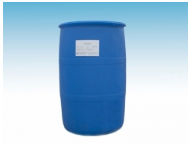The main reaction in the synthesis of cationic surfactants is N-alkylation, in which tertiary amine reacts with alkylation reagent to form quaternary ammonium salt, which is also called quaternization reaction.

Alkyl quaternary ammonium salt is one of the important varieties of quaternary ammonium cationic surfactant, which has been widely used as bactericide, fiber softener, mineral flotation agent, emulsifier and so on. Its structure is characterized by four alkyl groups attached to the nitrogen atom, that is, all the four hydrogen atoms of the ammonium ion are replaced by alkyl groups. Generally, only one or two of the alkyl groups are long-chain hydrocarbon alkyl groups, and the carbon atom number of the remaining alkyl groups is one or two. According to their structural characteristics, there are three main methods for the synthesis of alkyl quaternary ammonium salts, namely, the reaction of higher haloalkanes and lower tertiary amines, the reaction of higher alkyl amines and lower haloalkanes, and the preparation of alkyl quaternary ammonium salts by formaldehyde formic acid method.
Cationic surfactants have good bactericidal, softening, antistatic, anti-corrosion, emulsifying and wetting properties, and are often used as phase transfer catalysts. However, such surfactants are rarely used as detergents alone, because the surface of many substrates is usually negatively charged in aqueous solutions, especially in alkaline aqueous solutions. In the process of application, positively charged surfactants will form hydrophilic groups in the matrix surface, and hydrophobic groups are arranged outward, which makes the substrate surface hydrophobic and not conducive to washing, and even has negative effects. In addition, the main application fields of this kind of surfactants are not like other surfactants, which are used to reduce the surface tension, but use their structural characteristics for other special aspects.
There are two methods for the synthesis of alkyl glycosides. One is one-step process, including the reaction steps of sugar and high-carbon fatty alcohol under the action of acid catalyst, neutralization step and vacuum distillation step; the other is two-step method, including the reaction step of sugar and low-carbon fatty alcohol under the action of acid catalyst, the alcohol exchange reaction step of high-carbon alcohol and the above reaction solution, neutralization step, vacuum distillation or superheated water Alcohol removal by steam distillation.
No matter which method, there is a common problem, that is, color deterioration in the production process. The color deterioration is due to the existence of some unstable substances in the synthetic glycoside reaction solution, which change color during the distillation process (160 ℃) or higher temperature. The commercial alkyl polyglycoside must remove the excess fatty alcohol as far as possible, which forms a pair of contradictions, that is, the excess fatty alcohol should be fully evaporated without increasing the temperature. Therefore, how to fully reduce the alcohol content and maintain good color has become the concern of alkyl polyglycoside manufacturers and heavy science and technology workers.